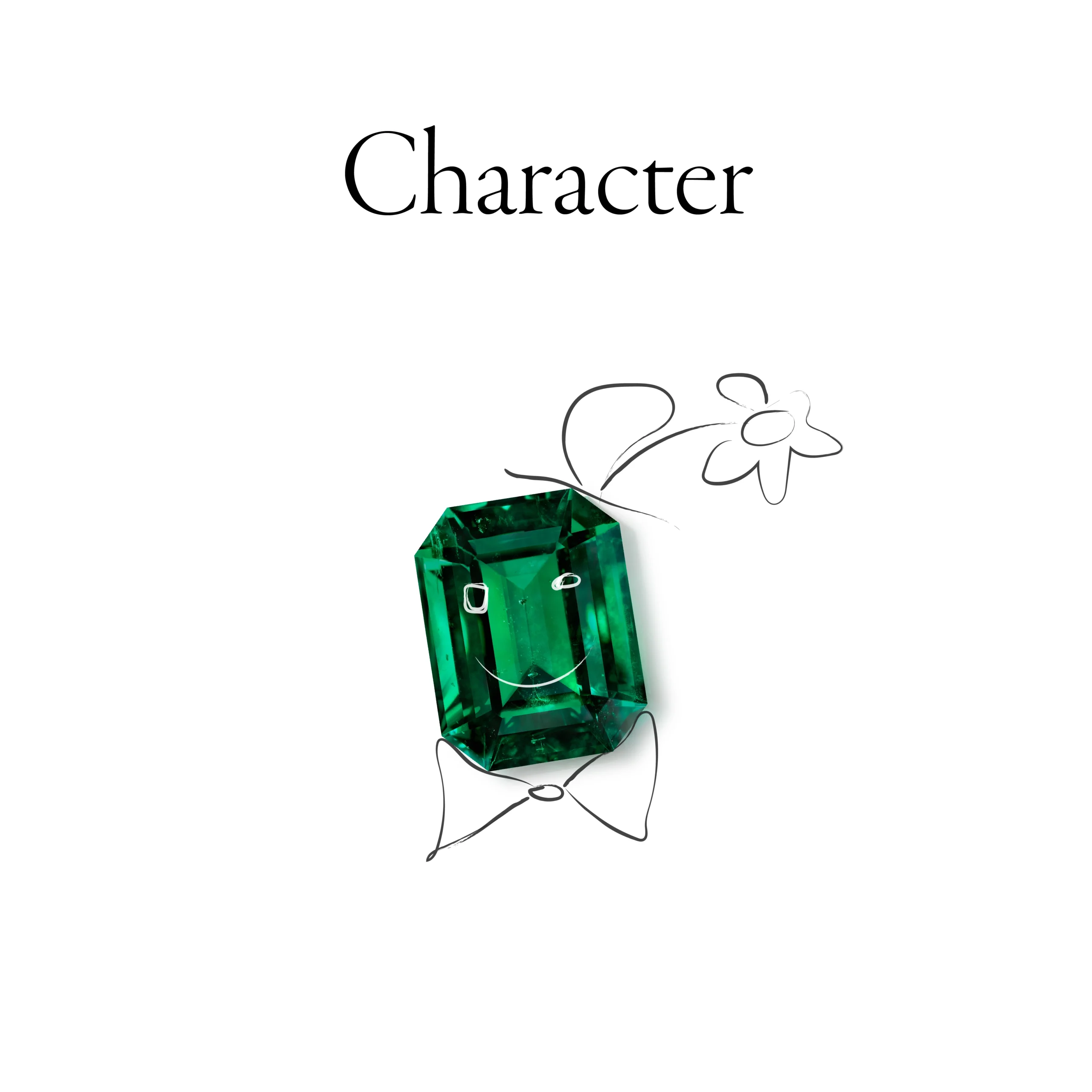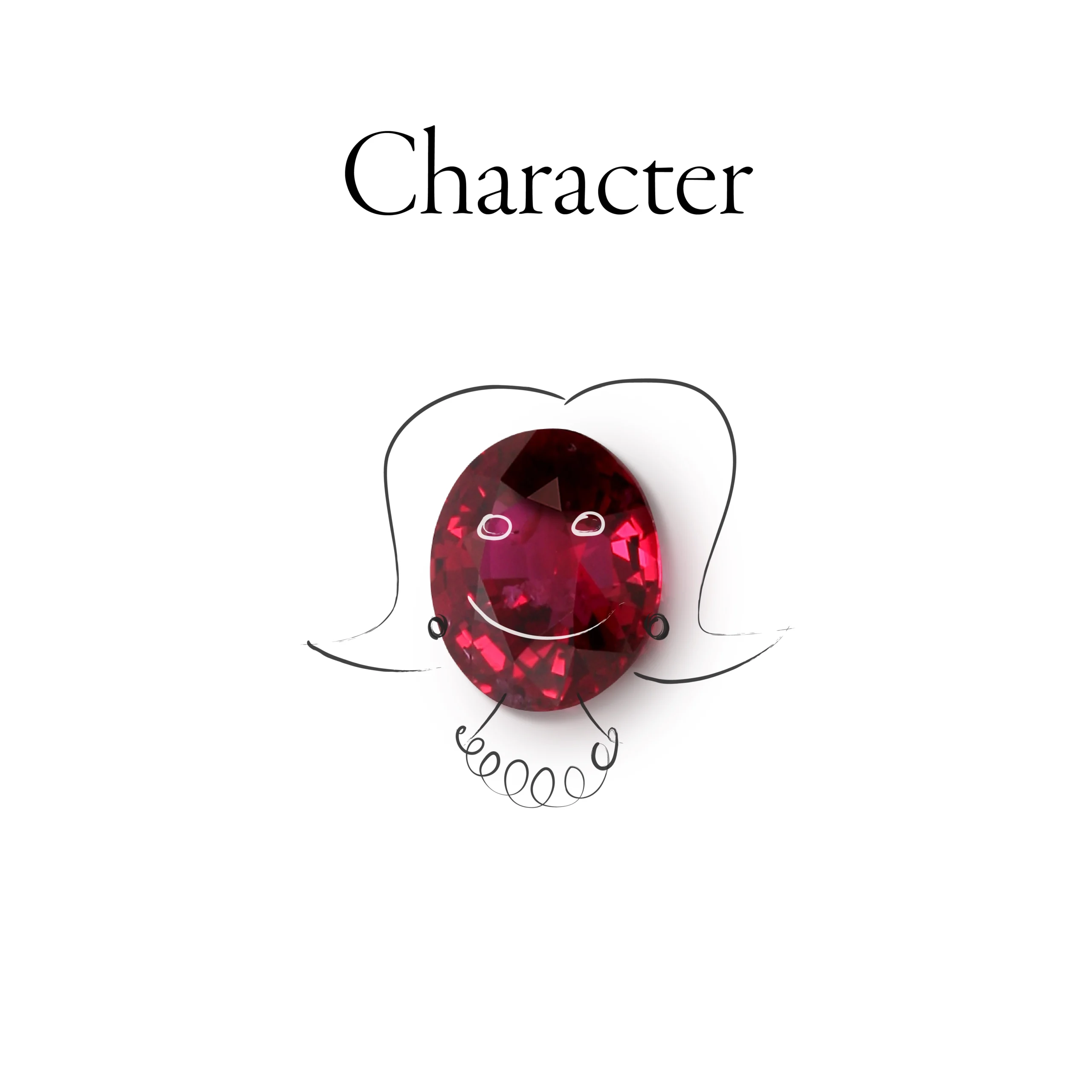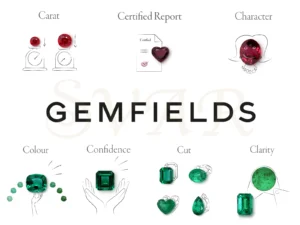GEMFIELDS’ GUIDE TO GEMS: THE 7CS
3rd September 2024
Where to begin when choosing a coloured gemstone? While many are familiar with the 4Cs for diamonds, a handy mnemonic for remembering the key factors of a faceted diamond, Gemfields – a world-leading miner of emeralds and rubies – guides consumers through the seven seas of coloured gemstones with its own 7Cs: Colour, Clarity, Cut, Carat, Certified report, Confidence and Character.
Colour
Gemstones need to possess three characteristics: beauty, durability, and rarity. Colour is the most important feature of a gem because it simultaneously conveys beauty and rarity. Each gemstone variety has its own acceptable range of colours that make that gem recognisable: emeralds are green, rubies are red, and so on.
Technically speaking, colour is an interplay of hue, tone, and saturation. A gem’s hue is the basic colour one observes; its lightness or darkness, or how vivid it is, will be described by tone and saturation, respectively.
The art of grading colour in a cut and polished transparent gemstone involves considering how the gem interacts with light. The cut and proportions of a gemstone affect how white light is refracted and reflected within the gem, shaping one’s perception of its colour intensity. To truly appreciate its beauty, one must observe the gem in a neutral, naturally lit environment by holding it at waist level and gently tilting it in all directions to capture its full beauty.
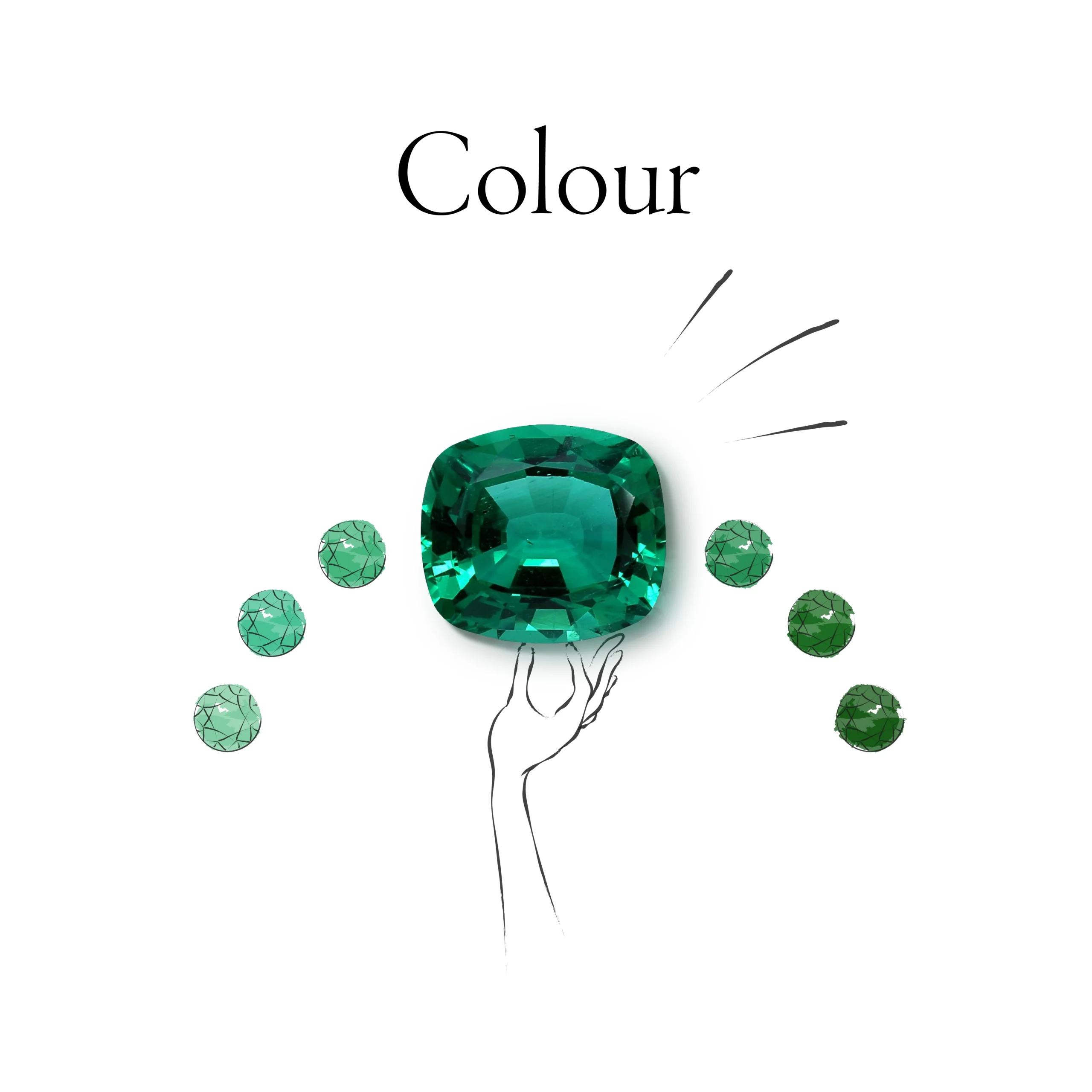
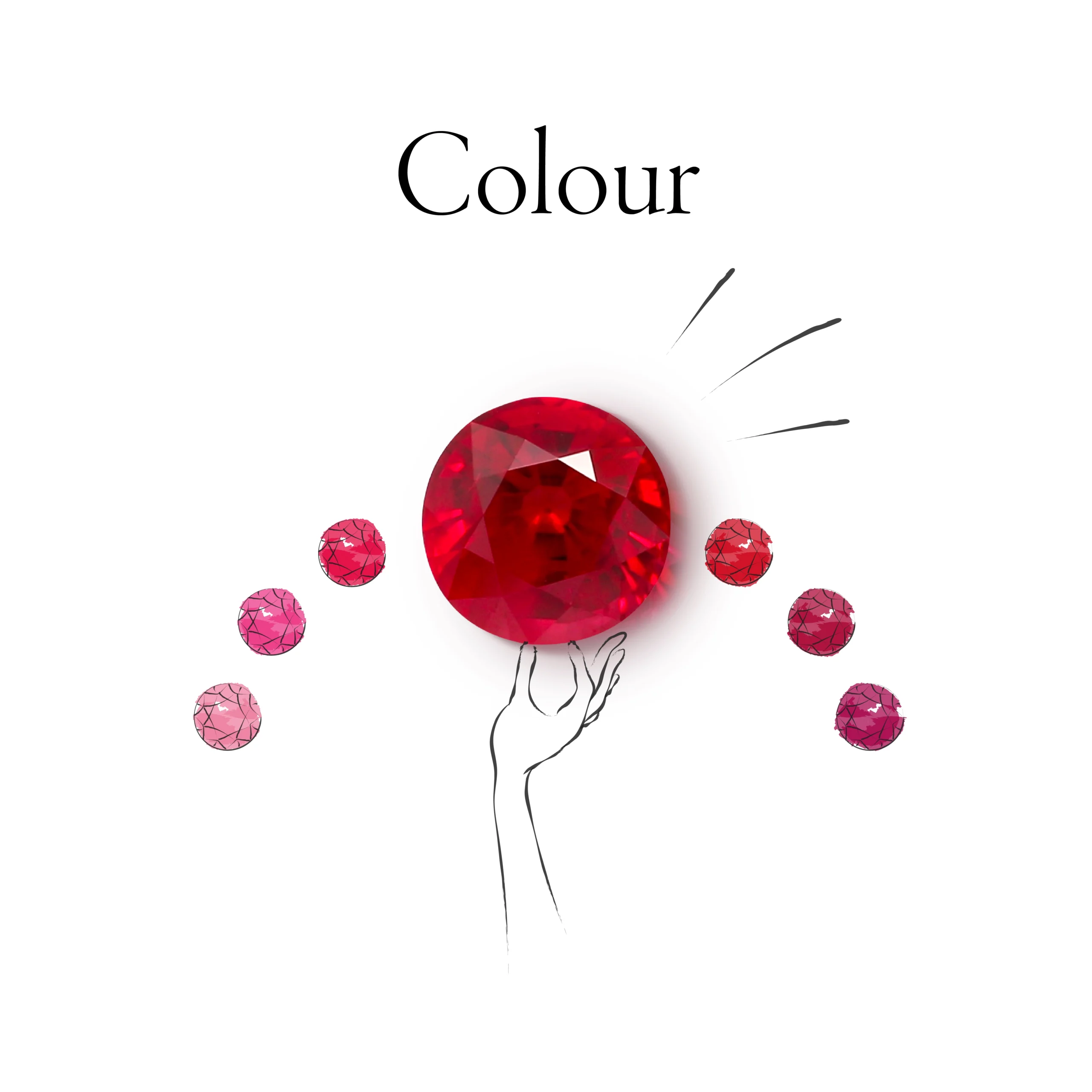
Clarity
While colour contributes to a gemstone’s allure and uniqueness, it is clarity that accentuates its resilience. In the world of gemmology, clarity delves into the presence and nature of inclusions and blemishes within a gemstone, unveiling its origin and journey. In a poetic twist, these marks embody each gemstone’s unique essence, making it uniquely special to its owner.
A desirable gemstone will feature inclusions that don’t stand out too proudly but silently contribute to its beauty. Certain varieties of coloured gemstones increase in value due to specific clarity features, while too many inclusions will affect a gem’s transparency, brilliance, and even durability. While the unaided eye can often glimpse a gemstone’s overall clarity, a magnifying loupe opens up a whole new world of exploration.
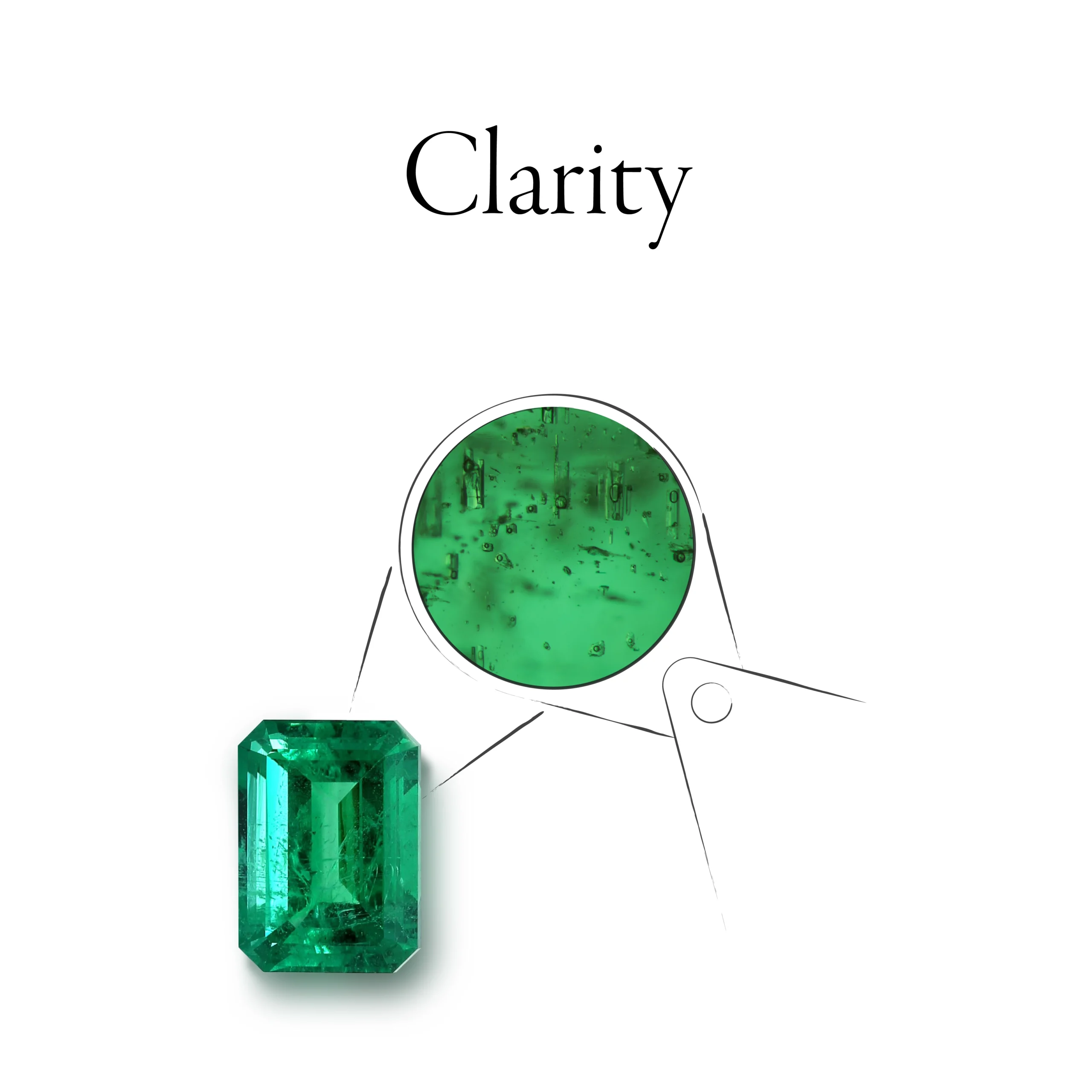
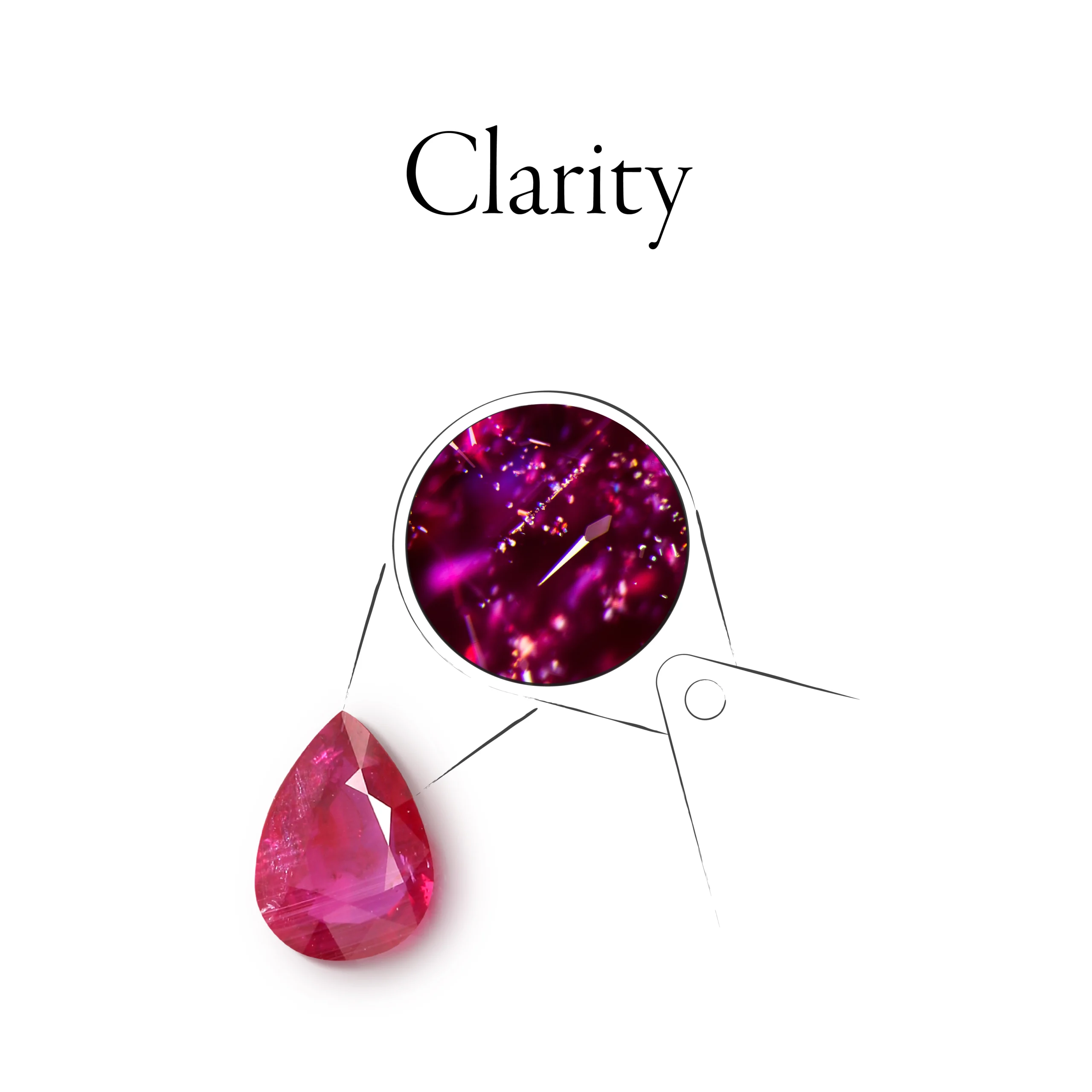
Cut
The cut of a gemstone refers to its outline shape and faceting style. Common shapes in coloured gemstones include round, oval, cushion, octagon, or pear, which are then faceted as brilliant, step cut, or a combination of both. The faceting style gives the gemstone its unique flair as it significantly influences its final brilliance and appearance.
A brilliant-cut is designed to maximise a gem’s inner sparkle. Its facets radiate upwards from the bottom point and optimise the reflection and refraction of light within the gem. Although diamonds are often synonymous with the brilliant cut, this classic choice is perfect for any gemstone where one wants to achieve a dazzling look. Alternatively, the step cut, known for its long facets that run parallel to the table of the gem, exudes elegance and timelessness. This style gained popularity during the Art Deco era in the early 20th century, with its emphasis on geometric shapes and symmetry. Not all gemstones showcase this faceting style, and not all emeralds do.
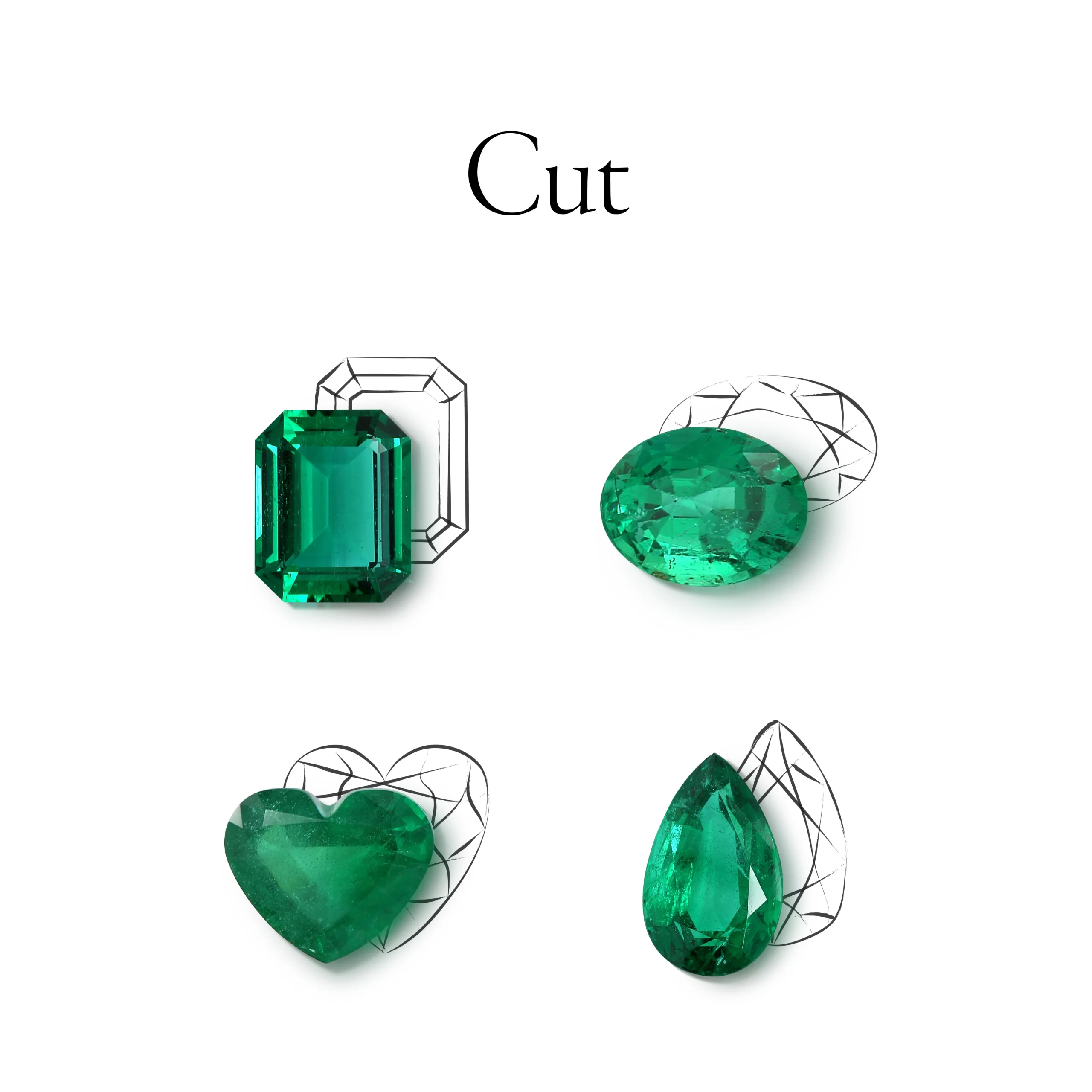
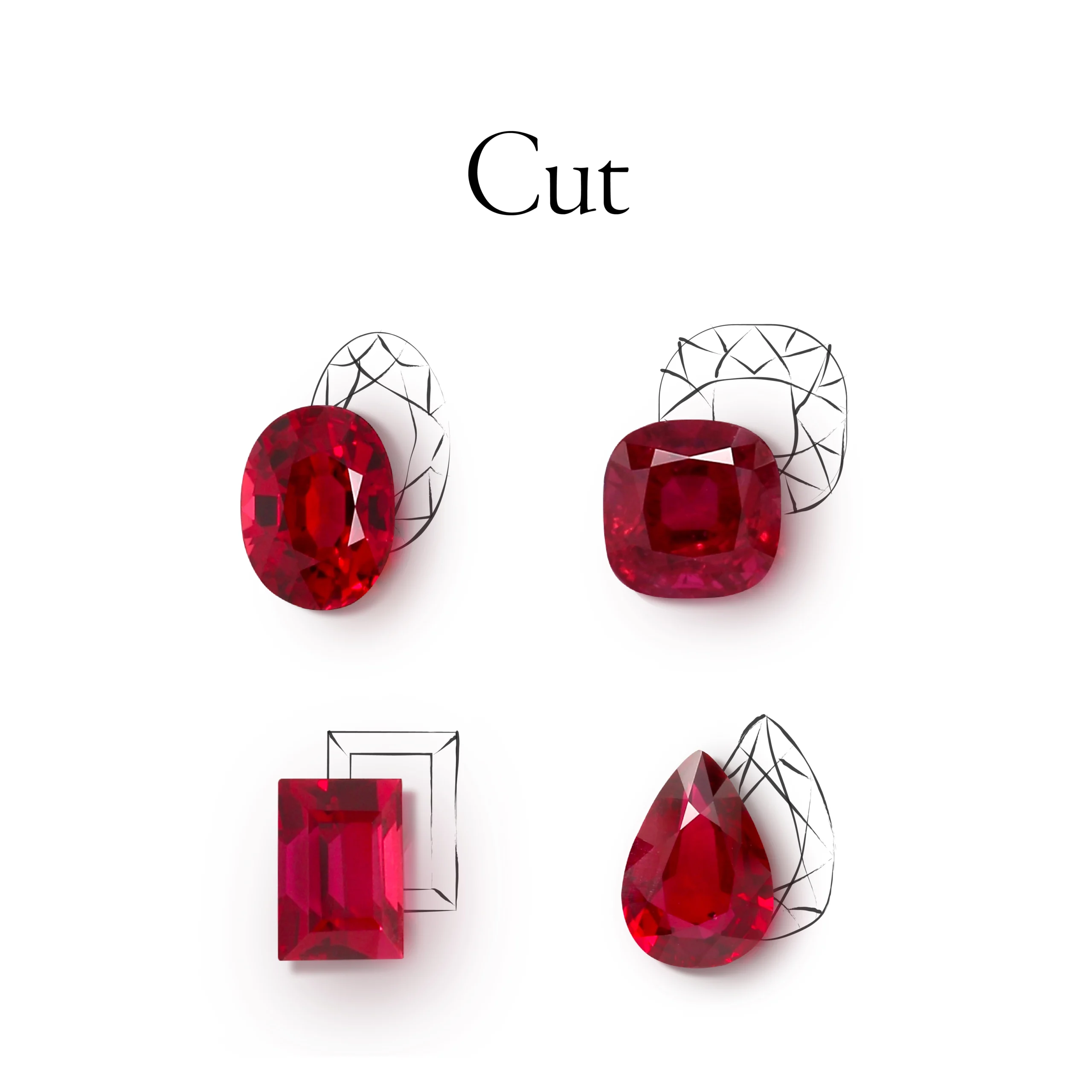
Carat
Carat is the internationally recognised unit of weight measurement for cut and polished gemstones. Gemstones are typically sold “by the carat” in the international trade, while rough gemstones are commonly sold by the gram. Interestingly, a carat is equivalent to 0.2 grams, which is the average weight of a carob seed. This method of measurement has been passed down from early gem traders, who used these small, uniform seeds as counterweights to balance the gems on their scales.
A gem’s carat weight can potentially indicate its volume or size, but this isn’t a reliable correlation, as each mineral has a different density and, therefore, a different weight. Carat weight is one factor that determines a gem’s value; generally speaking, the larger a gemstone, the rarer it is.
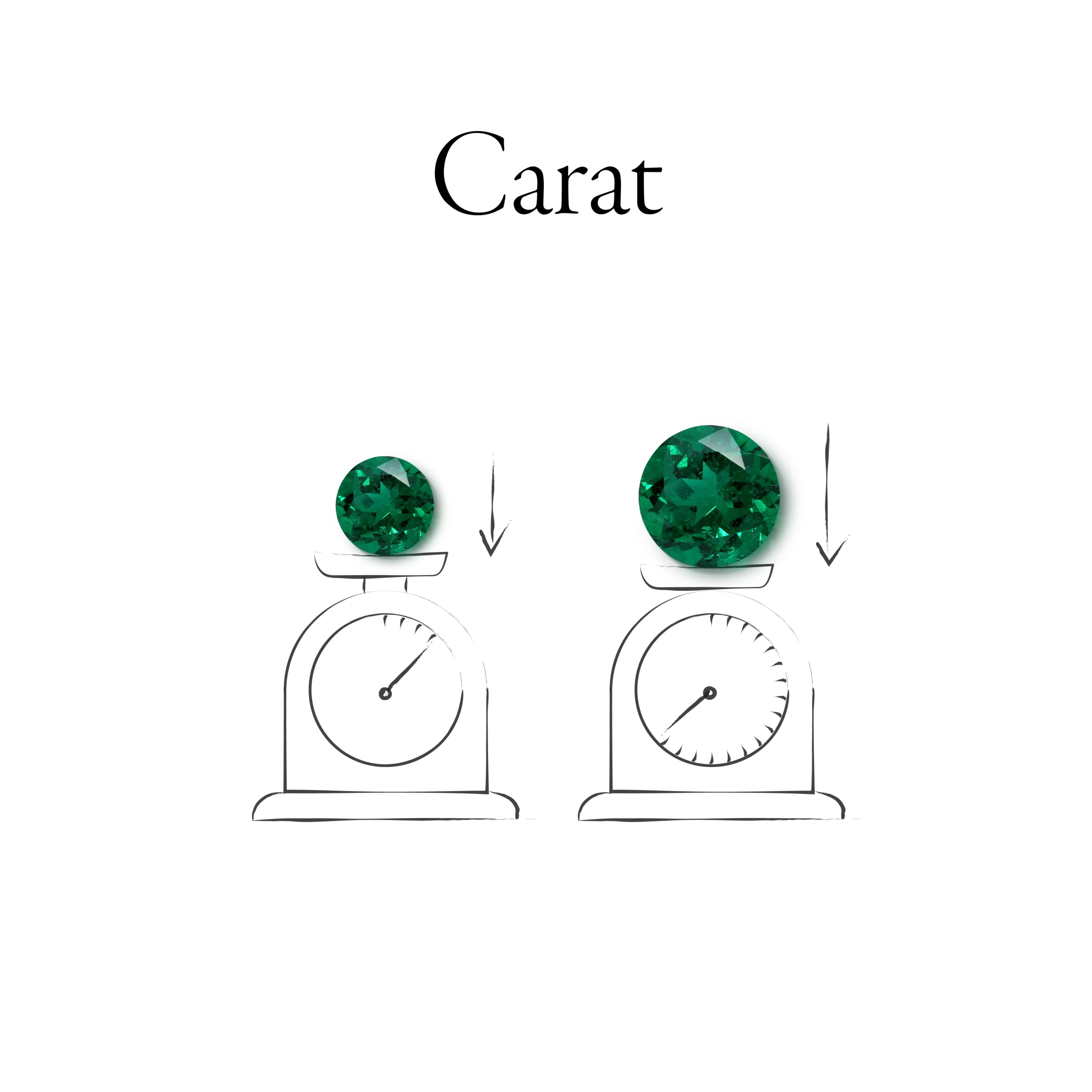
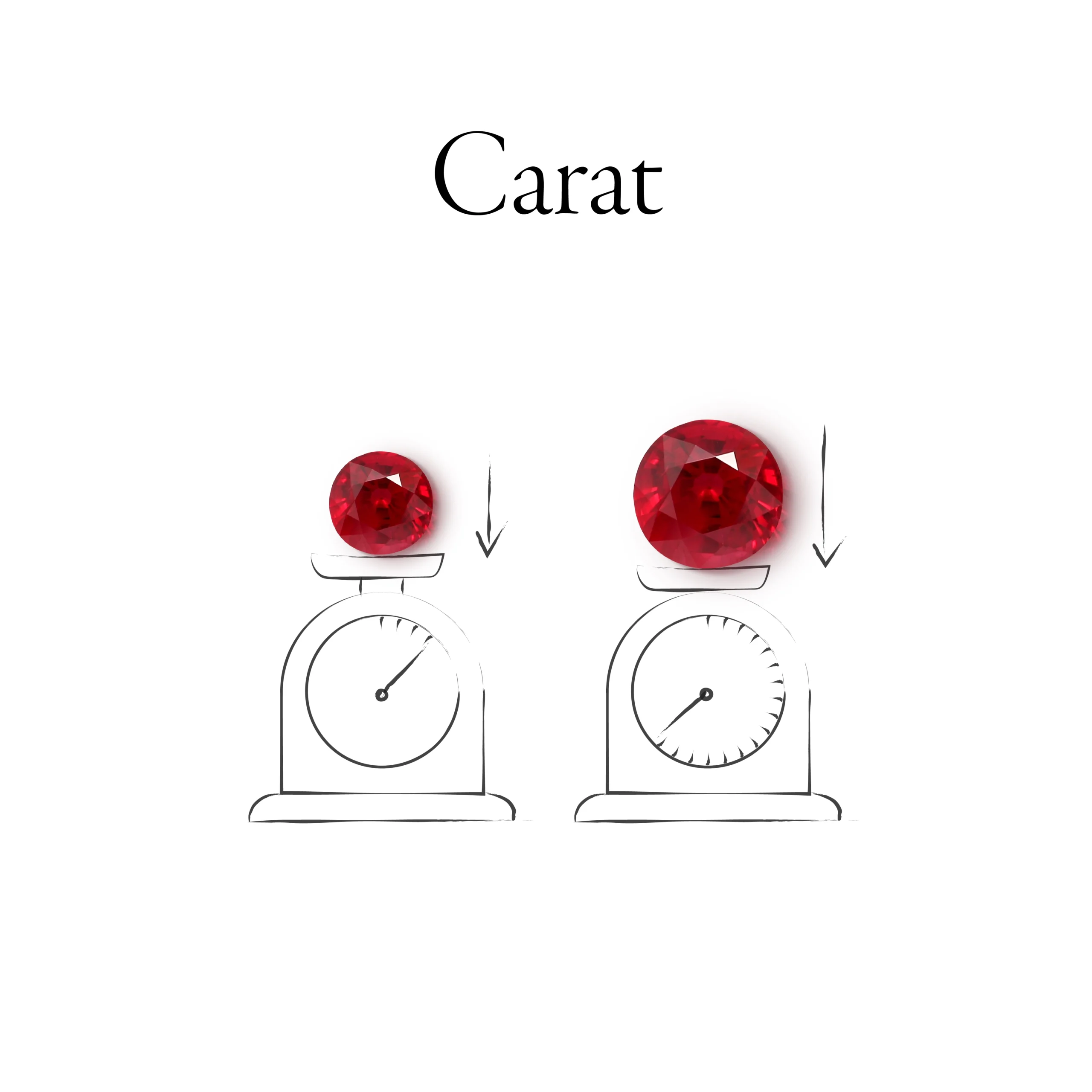
Certified Report
When considering purchasing a gemstone, one important (albeit less glamorous!) factor is the gemmological certificate that comes with it. This is especially important when buying solitaire rings or jewellery featuring a significant gemstone.
Just as a passport defines one’s identity, a gemmological certificate is a comprehensive, laminated report that details the unique characteristics of a cut and polished gemstone. It’s important to note that it’s not intended to grade the quality or value of a gem, but rather, it’s a tool for objectively stating its identity, authenticity, geographic origin, and any treatments applied. These details should align with the seller’s claims, and the value offered should be in line with the market value of similar gems with the same characteristics, ensuring a fair and transparent transaction.
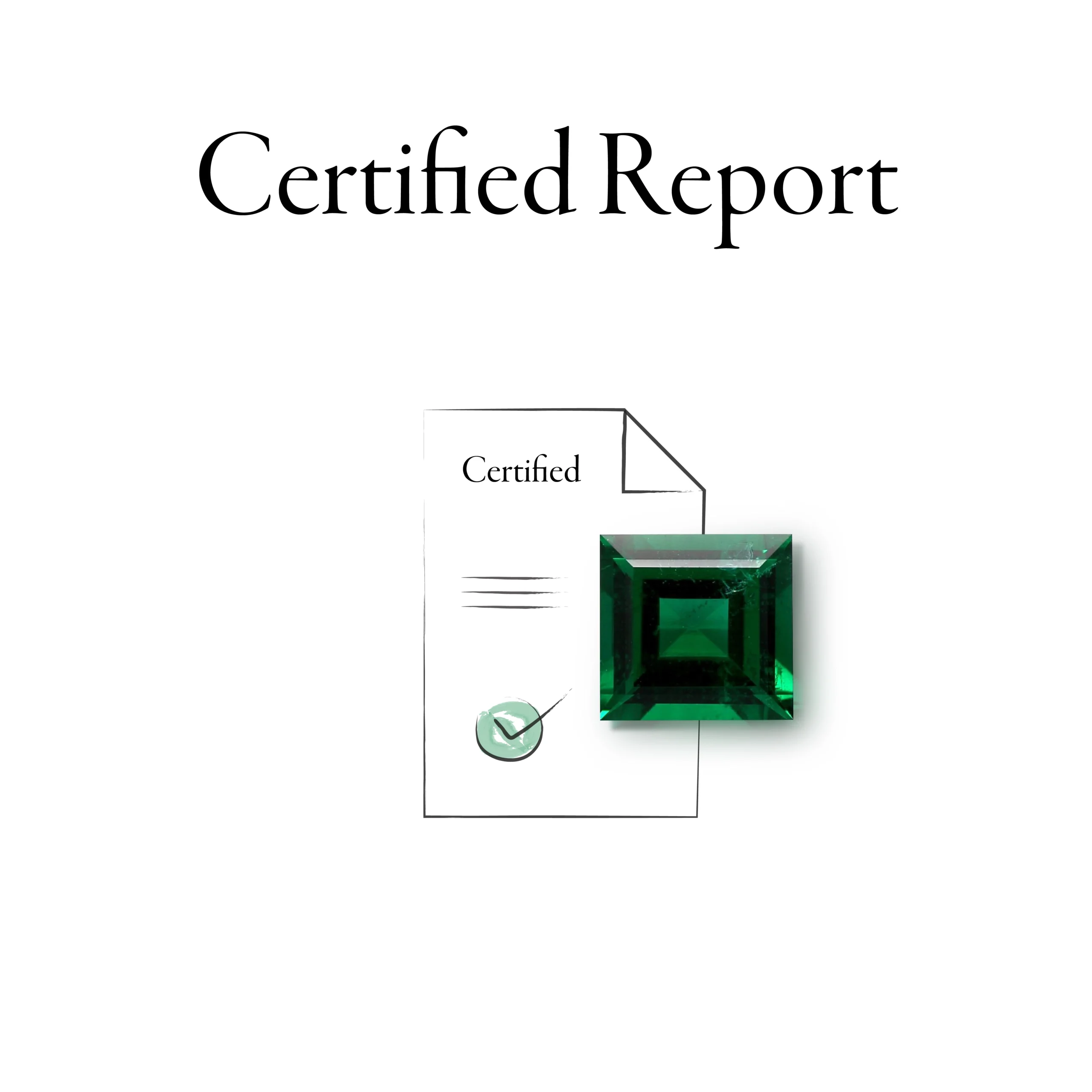
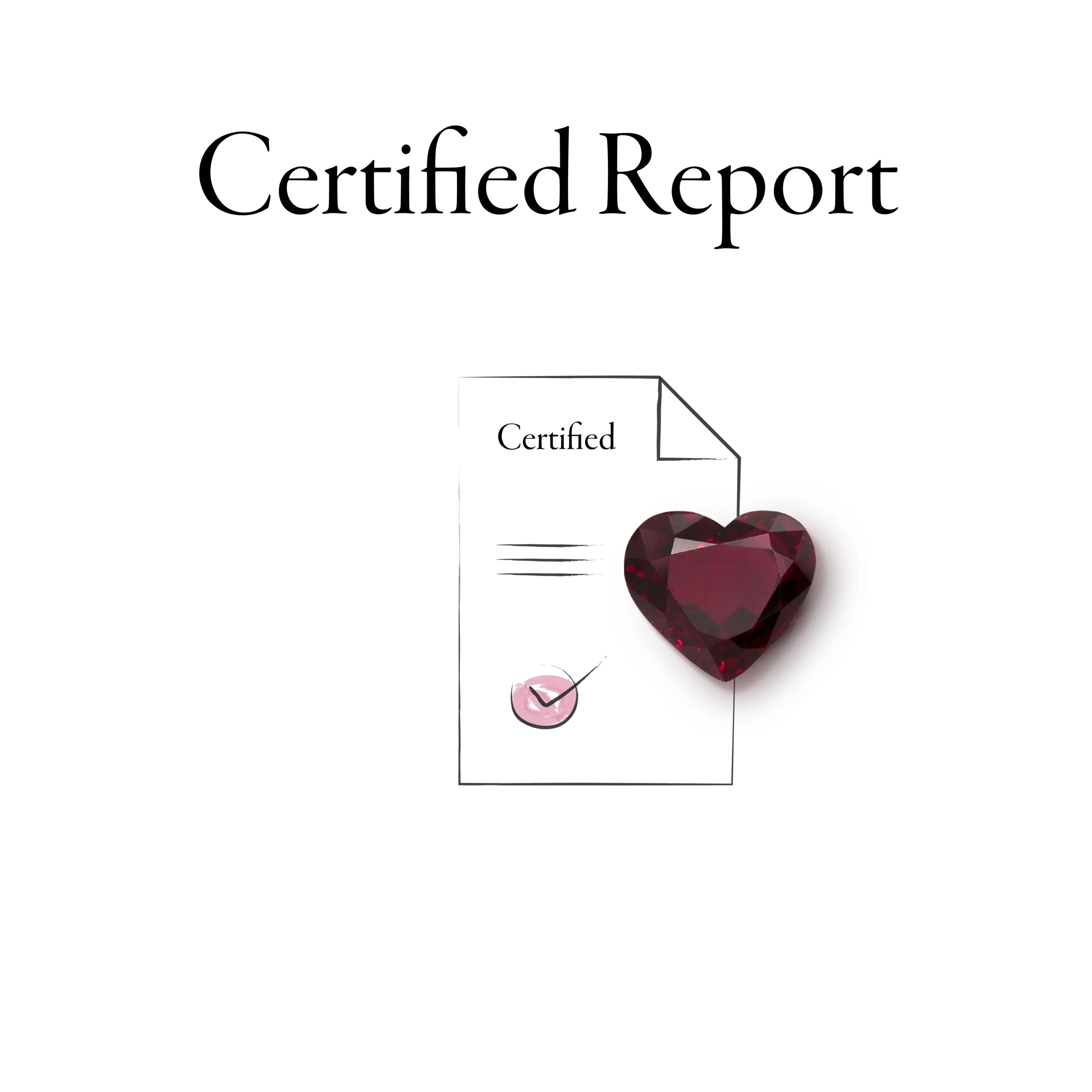
Confidence
The rising popularity of coloured gemstones has highlighted the need for a deeper understanding of a gemstone’s journey, which has long been veiled in mystery. Nowadays, a quick online search provides one with vast information that can be overwhelming and create some uncertainty. For instance, Who can one trust when considering purchasing a fine gem? Are certain colours better than others? The beauty of the gem business is that it is all about people and personal relationships.
Connecting personally, not only with the gemstone but also with its seller, is the cornerstone of the gem business. Doing so will allow the buyer to ask for information on a gemstone’s journey and to feel confident in their purchase.

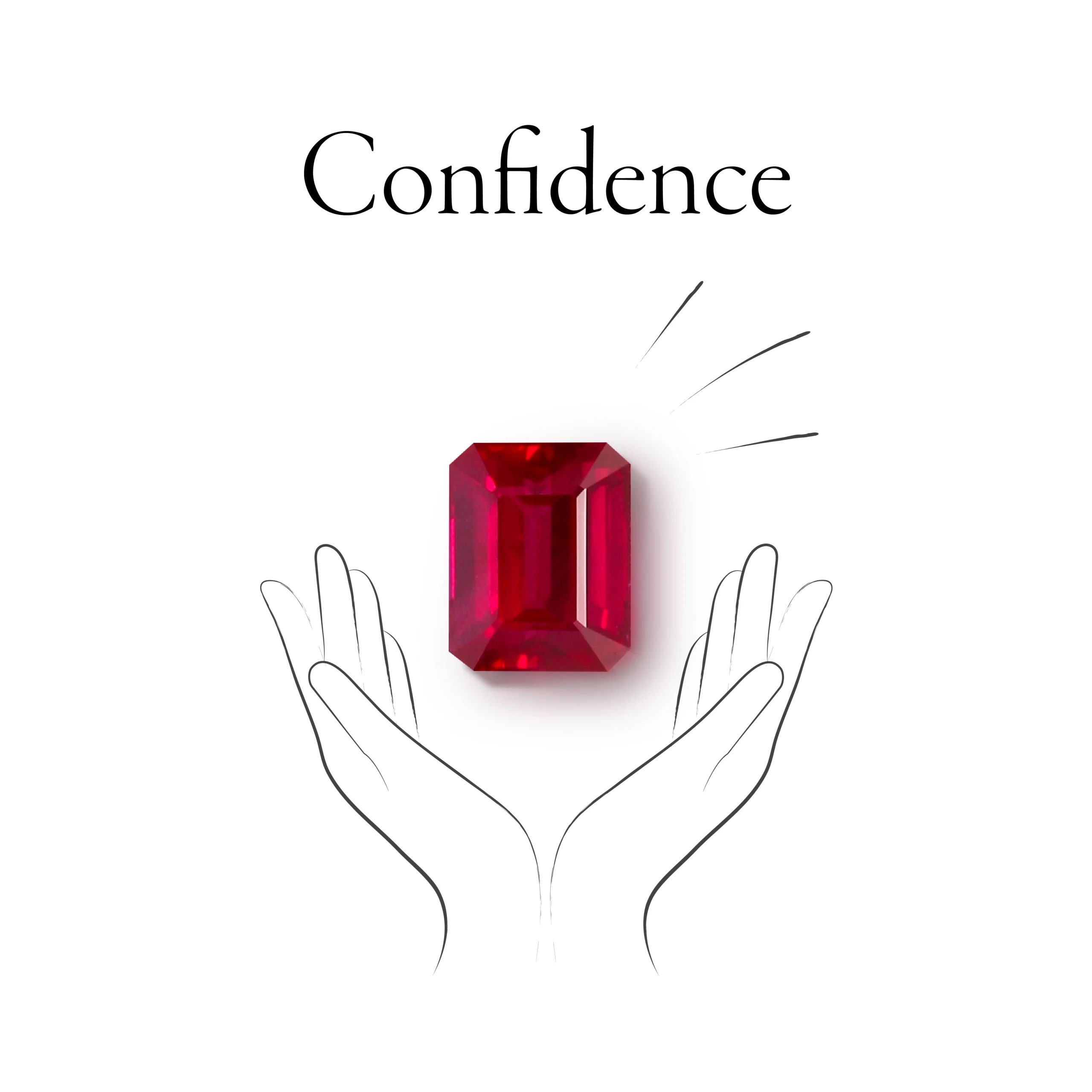
Character
Gemstones are believed to have the power to tap into the inherent human weakness for pretty things. They have a mystical way of choosing their owners, captivating them with their beauty in ways that are hard to fathom. Perhaps a colour speaks to a buyer because it brings back memories or pleases the senses, or inclusion within the gem gives it a charming allure; it could also be down to the cut and how it makes light sparkle in ways that are difficult to forget.
Character is, in fact, the sum of all the Cs, as it recognises that the sublime beauty of gemstones goes beyond measurable qualities and is instead elusive and inherently subjective. The main trait of character in a gem is, therefore, not contingent on its monetary value or the conventional notion of quality associated with a specific gem variety; it’s about celebrating individuality. It invites the buyer to follow their heart when choosing a gem.
